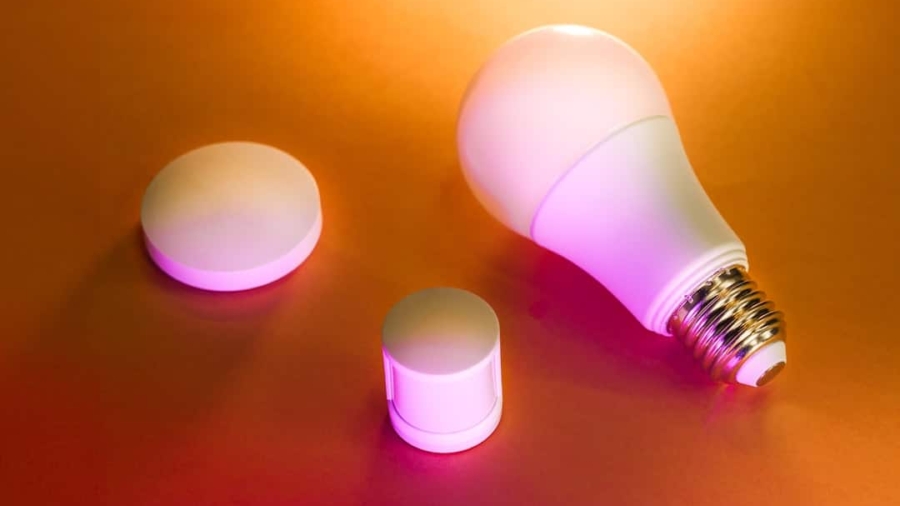The Internet of Things (IoT) has revolutionized the way we interact with technology, creating a network of interconnected devices that communicate and share data seamlessly. At the heart of this ecosystem are IoT sensors, which serve as the critical components that gather data from the physical world. These sensors can detect various environmental conditions, such as temperature, humidity, light, motion, and even chemical compositions.
By converting these physical phenomena into digital signals, IoT sensors enable devices to monitor and respond to changes in real-time, paving the way for smarter decision-making processes across various sectors. The proliferation of IoT sensors has been fueled by advancements in wireless communication technologies, miniaturization of components, and the increasing demand for automation. As organizations seek to optimize operations and enhance efficiency, the role of IoT sensors becomes increasingly vital.
They not only facilitate data collection but also enable predictive analytics and automated responses, transforming traditional monitoring systems into intelligent frameworks capable of adapting to dynamic environments. This transformation is particularly evident in industries such as manufacturing, healthcare, agriculture, and smart cities, where real-time data is essential for operational success.
Key Takeaways
- IoT sensors are devices that collect data from the environment and transmit it to a central system for analysis and monitoring.
- Automated monitoring is crucial for real-time data collection, analysis, and decision-making in various industries.
- IoT sensors enhance automated monitoring by providing real-time data on various parameters such as temperature, humidity, pressure, and more.
- Different types of IoT sensors, including temperature sensors, motion sensors, and proximity sensors, are used for automated monitoring in industries.
- IoT sensors find applications in industries such as healthcare, agriculture, manufacturing, and transportation, providing real-time data for improved efficiency and decision-making.
The Importance of Automated Monitoring
Automated monitoring systems have emerged as indispensable tools in contemporary operations, providing organizations with the ability to track performance metrics and environmental conditions without the need for constant human oversight. This automation is crucial in a world where rapid decision-making is often necessary to maintain competitive advantage. By leveraging automated monitoring, businesses can ensure that they are not only responsive to immediate issues but also proactive in identifying potential problems before they escalate.
The significance of automated monitoring extends beyond mere efficiency; it also enhances accuracy and reliability. Human error is an inherent risk in manual monitoring processes, where fatigue or oversight can lead to critical mistakes. Automated systems mitigate this risk by continuously collecting and analyzing data, ensuring that organizations have access to accurate information at all times.
Furthermore, automated monitoring can lead to significant cost savings by reducing labor costs and minimizing downtime associated with equipment failures or environmental hazards.
How IoT Sensors Enhance Automated Monitoring

IoT sensors play a pivotal role in enhancing automated monitoring by providing real-time data that is essential for informed decision-making.
For instance, in a manufacturing setting, IoT sensors can monitor machinery performance and detect deviations from normal operating conditions, allowing for timely maintenance interventions that prevent costly breakdowns.
Moreover, the integration of IoT sensors with cloud computing and advanced analytics platforms amplifies their impact on automated monitoring. Data collected by these sensors can be transmitted to centralized systems where it is processed and analyzed using sophisticated algorithms. This enables organizations to not only monitor current conditions but also predict future trends based on historical data.
For example, in agriculture, soil moisture sensors can provide farmers with insights into irrigation needs, optimizing water usage and improving crop yields while minimizing waste.
Types of IoT Sensors Used in Automated Monitoring
A diverse range of IoT sensors is employed in automated monitoring systems, each designed to capture specific types of data relevant to various applications. Temperature sensors are among the most common types used across industries; they monitor environmental conditions in settings such as warehouses, laboratories, and manufacturing facilities. These sensors ensure that products are stored under optimal conditions, thereby preserving quality and safety.
Another significant category of IoT sensors includes humidity sensors, which are crucial in environments where moisture levels must be controlled, such as in food storage or pharmaceutical manufacturing. Additionally, motion sensors are widely used in security systems and smart buildings to detect unauthorized access or monitor occupancy levels. Pressure sensors also play a vital role in industries like oil and gas, where they monitor pipeline integrity and prevent leaks or ruptures.
Each type of sensor contributes uniquely to the overall effectiveness of automated monitoring systems by providing critical data that informs operational decisions.
Applications of IoT Sensors in Different Industries
The applications of IoT sensors span a multitude of industries, each leveraging these devices to enhance operational efficiency and improve outcomes. In healthcare, for instance, wearable IoT sensors monitor patients’ vital signs in real-time, allowing healthcare providers to track health metrics remotely and intervene when necessary. This capability is particularly beneficial for managing chronic conditions such as diabetes or heart disease, where continuous monitoring can lead to timely adjustments in treatment plans.
In agriculture, IoT sensors are transforming traditional farming practices through precision agriculture techniques. Soil moisture sensors provide farmers with real-time data on soil conditions, enabling them to optimize irrigation schedules and reduce water consumption. Similarly, temperature and humidity sensors help monitor greenhouse environments, ensuring optimal growing conditions for crops.
The integration of these sensors into agricultural practices not only enhances productivity but also promotes sustainable farming methods by minimizing resource waste.
Advantages of Using IoT Sensors for Automated Monitoring

The advantages of utilizing IoT sensors for automated monitoring are manifold and contribute significantly to operational excellence across various sectors. One of the primary benefits is the ability to achieve real-time visibility into processes and environments. This immediacy allows organizations to respond swiftly to changes or anomalies, thereby minimizing risks associated with equipment failures or environmental hazards.
Additionally, IoT sensors facilitate data-driven decision-making by providing organizations with actionable insights derived from continuous data collection. This capability empowers businesses to optimize processes based on empirical evidence rather than intuition or guesswork. Furthermore, the scalability of IoT sensor networks allows organizations to expand their monitoring capabilities as needed without significant infrastructure investments.
As new technologies emerge and industries evolve, the adaptability of IoT sensor systems ensures that organizations remain at the forefront of innovation.
Challenges and Limitations of IoT Sensors in Automated Monitoring
Despite their numerous advantages, the deployment of IoT sensors for automated monitoring is not without challenges and limitations. One significant concern is data security; as more devices become interconnected, the potential for cyberattacks increases. Ensuring that sensitive data collected by IoT sensors is protected from unauthorized access is paramount for organizations looking to maintain trust with customers and stakeholders.
Another challenge lies in the integration of diverse sensor types and communication protocols within existing systems. Many organizations may struggle with interoperability issues when attempting to connect various devices from different manufacturers. This fragmentation can hinder the effectiveness of automated monitoring systems and complicate data analysis efforts.
Additionally, the sheer volume of data generated by IoT sensors can overwhelm existing data management systems if not properly managed and analyzed.
Future Trends in IoT Sensors for Automated Monitoring
Looking ahead, several trends are poised to shape the future landscape of IoT sensors in automated monitoring. One notable trend is the increasing adoption of artificial intelligence (AI) and machine learning (ML) algorithms to enhance data analysis capabilities.
Furthermore, advancements in edge computing are likely to play a crucial role in the evolution of IoT sensor networks. By processing data closer to the source rather than relying solely on centralized cloud systems, edge computing can reduce latency and improve response times for automated monitoring applications. This shift will be particularly beneficial in scenarios where real-time decision-making is critical.
Additionally, as sustainability becomes a focal point for many industries, there will be a growing emphasis on developing energy-efficient IoT sensors that minimize power consumption while maintaining performance standards. Innovations such as energy harvesting technologies may enable sensors to operate autonomously without frequent battery replacements, further enhancing their viability in long-term deployments. In conclusion, the future of IoT sensors in automated monitoring appears promising as technological advancements continue to drive innovation across various sectors.
The integration of AI, edge computing, and sustainable practices will undoubtedly enhance the capabilities of these sensors, enabling organizations to achieve unprecedented levels of efficiency and responsiveness in their operations.
In a related article, Best Software for 3D Printing, the focus is on the importance of utilizing the right software tools to enhance the efficiency and quality of 3D printing processes. Just like IoT sensors play a crucial role in automated monitoring, the right software can make a significant difference in the outcome of 3D printing projects. By exploring the best software options available, manufacturers can streamline their operations and achieve better results in their 3D printing endeavors.
FAQs
What are IoT sensors?
IoT sensors are devices that are capable of gathering data from the physical world and transmitting it over the internet. These sensors can measure various parameters such as temperature, humidity, light, motion, and more.
How do IoT sensors enhance automated monitoring?
IoT sensors enhance automated monitoring by continuously collecting and transmitting data in real-time. This allows for the monitoring of various systems and processes without the need for human intervention, leading to improved efficiency and accuracy.
What are some examples of IoT sensors used in automated monitoring?
Examples of IoT sensors used in automated monitoring include temperature sensors for HVAC systems, motion sensors for security systems, and pressure sensors for industrial equipment. These sensors help in detecting changes and anomalies in the environment, enabling quick responses and preventive maintenance.
What are the benefits of using IoT sensors in automated monitoring?
The benefits of using IoT sensors in automated monitoring include improved accuracy, reduced operational costs, proactive maintenance, and enhanced safety and security. These sensors also enable predictive analytics and data-driven decision making.
How are IoT sensors integrated into automated monitoring systems?
IoT sensors are integrated into automated monitoring systems through wireless or wired connections to a central monitoring platform. This platform collects, processes, and analyzes the data from the sensors, providing real-time insights and alerts for monitoring and control.

